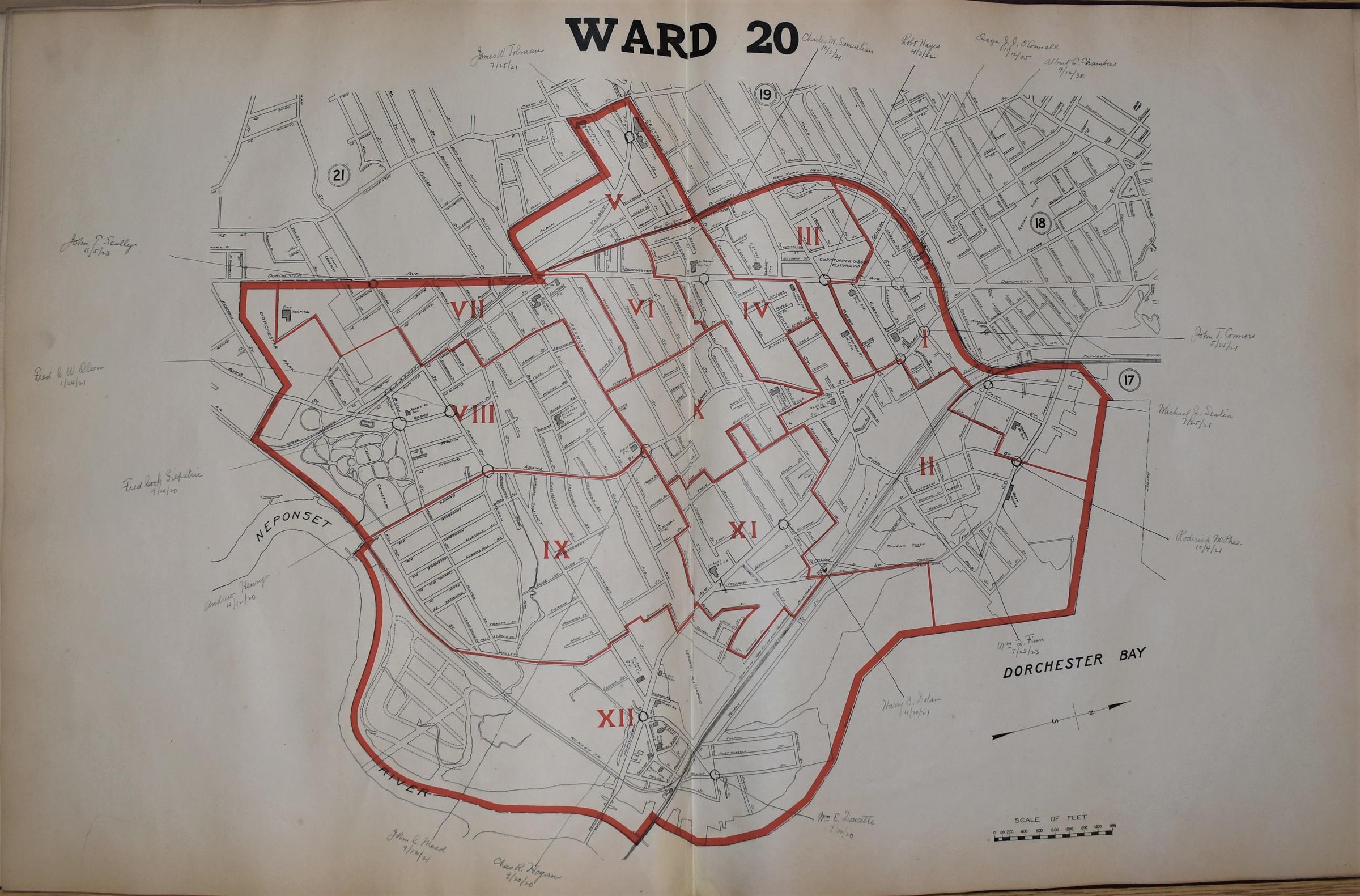The Mary Eliza Project: Ward 20 Voter Records Now Available
In Boston's Ward 20, over 2,300 women registered to vote in 1920. We’ve finished transcribing our Ward 20 Women’s Voter Registers and the data is now available at Analyze Boston.
In 1920, after the passage of the 19th Amendment, over 50,000 Boston women registered to vote. When women registered to vote, they gave their names, addresses, places of birth, and occupations. Sometimes, the new voters also provided information about their naturalization process to become a U.S. citizen, including where their husbands were born because in 1920, a woman's citizenship status was tied to her husband's nationality. These registers are an invaluable resource for researching family history, women’s history, Boston history - and a wealth of other topics!
Through a generous grant provided by the Community Preservation Act, the City Archives is transcribing these valuable registers into a searchable and sortable dataset. One of our transcribers, Erin, has recently finished transcribing the Ward 20 registers and they have been added into the dataset!
Ward 20 covered much of the Ashmont section of Dorchester, stretching from the Neponset River to Dorchester Bay. You can see the bounds of the ward in the map above.
The women of Ward 20 were eager to cast their ballots. Between August 2 and October 13, 1920 over 2300 women in Ward 20 registered. Almost 500 of the new voters were born outside of the United States including Austria, Denmark, Finland, France, Germany, Ireland, Italy, Norway, Russia, present-day Ukraine, Sweden, Switzerland, and Syria.
The new voters of Ward 20 also represented a wide variety of occupations. Many women listed their place of work as the Walter Baker Chocolate Factory listing job titles of chocolate wrapper, bean sorter, or forelady. Other women worked as bookbinders, housekeepers, librarians, artists, salesladies, clerks, stenographers and more.
Two sisters and their occupations jumped out at us as we looked through the data. Sophia and Lillian Kandib registered to vote together on August 17, 1920. They lived together at 46 King Street and both listed their places of work as dentistry practices. Sophia, the older sister, listed her occupation as “dentist’ and gave a practice in Cambridge, while her younger sister Lillian told the clerk that she was a student at the Forsyth Dental School. Census records show that a third sister, Anna, worked as a medical doctor. The sisters’ parents were born in Ukraine and ran their own laundry business.
The entries for the Kandib sisters are two of many intriguing registrations for Ward 20. Browse or search the dataset for yourself and share your findings



